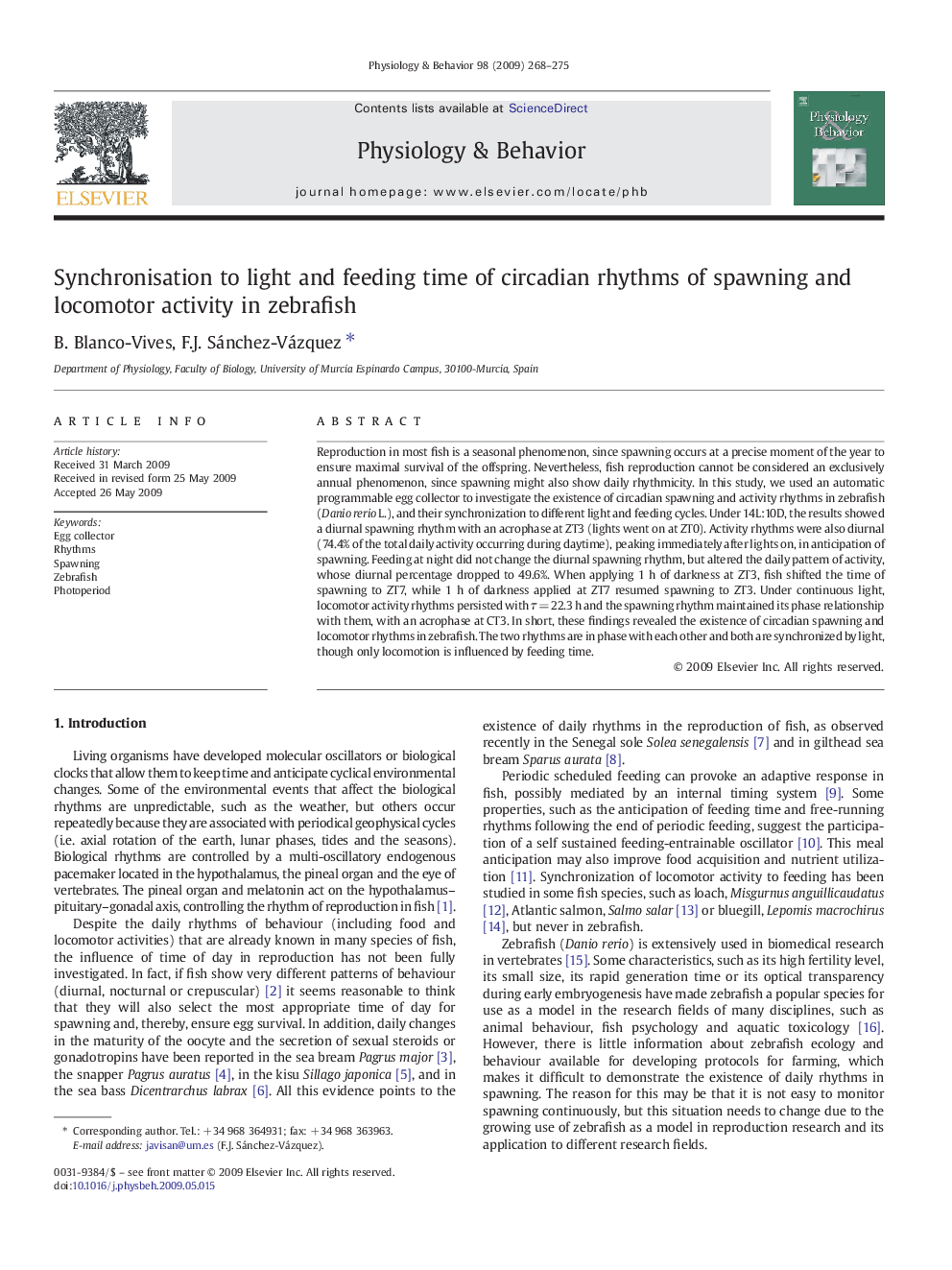| Article ID | Journal | Published Year | Pages | File Type |
|---|---|---|---|---|
| 2845006 | Physiology & Behavior | 2009 | 8 Pages |
Reproduction in most fish is a seasonal phenomenon, since spawning occurs at a precise moment of the year to ensure maximal survival of the offspring. Nevertheless, fish reproduction cannot be considered an exclusively annual phenomenon, since spawning might also show daily rhythmicity. In this study, we used an automatic programmable egg collector to investigate the existence of circadian spawning and activity rhythms in zebrafish (Danio rerio L.), and their synchronization to different light and feeding cycles. Under 14L:10D, the results showed a diurnal spawning rhythm with an acrophase at ZT3 (lights went on at ZT0). Activity rhythms were also diurnal (74.4% of the total daily activity occurring during daytime), peaking immediately after lights on, in anticipation of spawning. Feeding at night did not change the diurnal spawning rhythm, but altered the daily pattern of activity, whose diurnal percentage dropped to 49.6%. When applying 1 h of darkness at ZT3, fish shifted the time of spawning to ZT7, while 1 h of darkness applied at ZT7 resumed spawning to ZT3. Under continuous light, locomotor activity rhythms persisted with τ = 22.3 h and the spawning rhythm maintained its phase relationship with them, with an acrophase at CT3. In short, these findings revealed the existence of circadian spawning and locomotor rhythms in zebrafish. The two rhythms are in phase with each other and both are synchronized by light, though only locomotion is influenced by feeding time.
